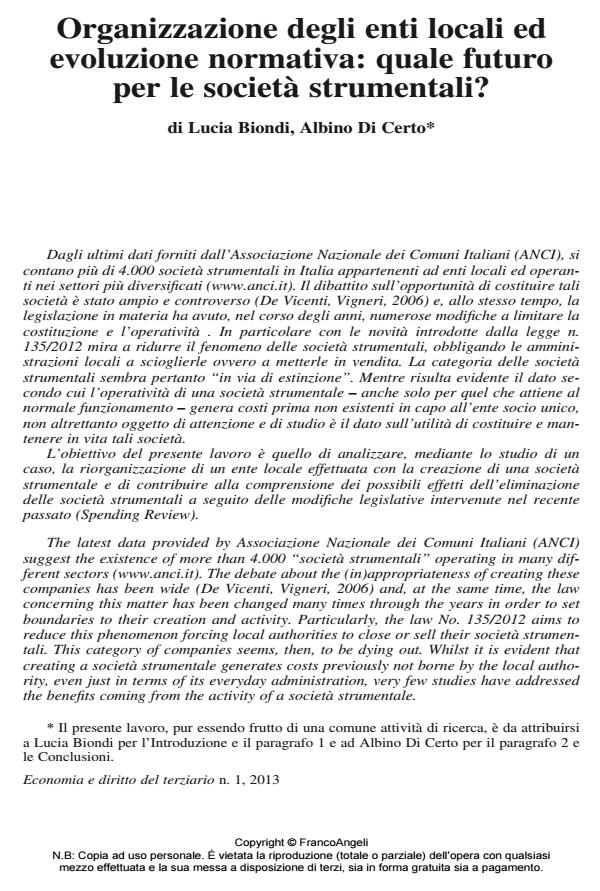Organizzazione degli enti locali ed evoluzione normativa: quale futuro per le società strumentali?
Journal title ECONOMIA E DIRITTO DEL TERZIARIO
Author/s Lucia Biondi, Albino Di Certo
Publishing Year 2013 Issue 2013/1
Language Italian Pages 28 P. 99-126 File size 157 KB
DOI 10.3280/ED2013-001005
DOI is like a bar code for intellectual property: to have more infomation
click here
Below, you can see the article first page
If you want to buy this article in PDF format, you can do it, following the instructions to buy download credits

FrancoAngeli is member of Publishers International Linking Association, Inc (PILA), a not-for-profit association which run the CrossRef service enabling links to and from online scholarly content.
The latest data provided by Associazione Nazionale dei Comuni Italiani (ANCI) suggest the existence of more than 4.000 "società strumentali" operating in many different sectors (www.anci.it). The debate about the (in)appropriateness of creating these companies has been wide (De Vicenti, Vigneri, 2006) and, at the same time, the law concerning this matter has been changed many times through the years in order to set boundaries to their creation and activity. Particularly, the law No. 135/2012 aims to reduce this phenomenon forcing local authorities to close or sell their società strumentali. This category of companies seems, then, to be dying out. Whilst it is evident that creating a società strumentale generates costs previously not borne by the local authority, even just in terms of its everyday administration, very few studies have addressed the benefits coming from the activity of a società strumentale. The aim of this work is to analyse through a case study the re-organization of a Municipality performed with the creation of a società strumentale and to contribute to the understanding of the possible consequences of the elimination of the società strumentali following the recent changes in the relevant law (Spending Review).
Lucia Biondi, Albino Di Certo, Organizzazione degli enti locali ed evoluzione normativa: quale futuro per le società strumentali? in "ECONOMIA E DIRITTO DEL TERZIARIO " 1/2013, pp 99-126, DOI: 10.3280/ED2013-001005